

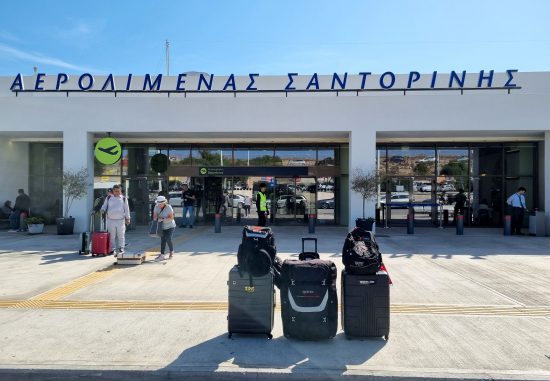
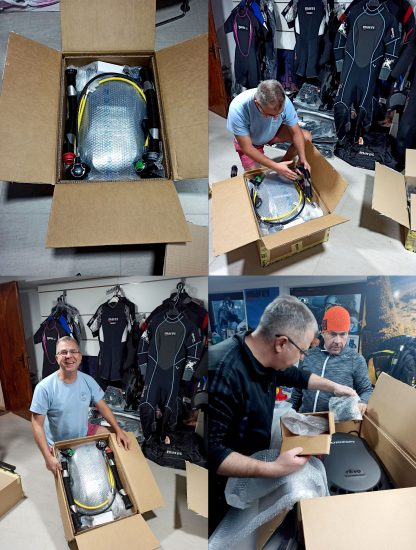
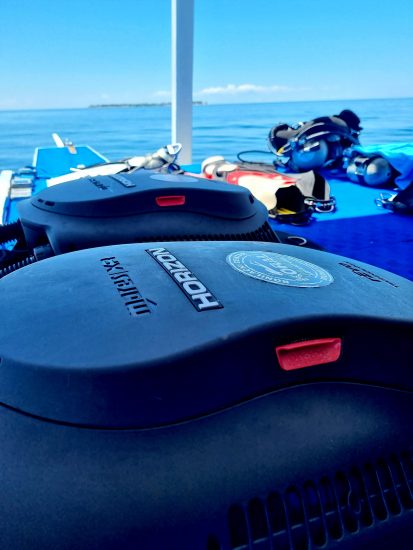
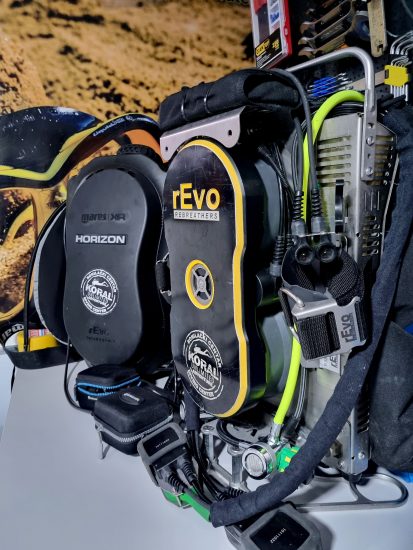
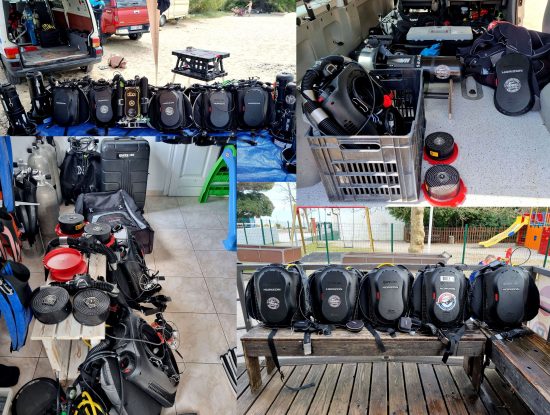
Traveling with diving equipment has always been a calling for divers. With airlines tightening luggage restrictions, packing for a dive trip is hard enough with just recreational gear, and traveling with a rebreather adds another level of difficulty.
As soon as we go diving in a new destination which requires transportation by car, bus or even plane, our regular procedure of packing and preparing equipment becomes more demanding. It is even more challenging for divers taking rebreather units which are more complex to pack and secure during transport.
Diving with rebreathers, we face the challenge of packing and carrying all the necessary pieces of equipment while trying to stay within the weight limits decided by the airline companies. Traveling by plane adds more of a challenge compared to other modes of transport. Ask yourself what you need to bring, how you need to pack it and if the dive center will have everything you need when you get there. If you think about all of these questions and manage to tackle them one at a time, you’ll find that traveling with a rebreather can be very simple.
In my diving career, which has gradually developed from level to level, diving with rebreathers has been a main feature in most of my dives. Rebreathers require increased attention, meticulousness, accuracy and responsibility, which greatly facilitates organization when packing and preparing for a trip.
When I was thinking about which rebreather unit to buy, one of the decisive factors in choosing the rEvo rebreather was its compactness when transporting, carrying and packing as well as the thin profile of the unit which allows it to fit easily in several types of suitcases and bags. The rEvo unit itself is also produced in three different sizes depending on both the diver's constitution and the specific travel and storage requirements of the unit. The "Micro FT" version of the rEvo rebreather has the additional option of a frame and a case made of Titanium. It's lighter than steel and makes the unit an incredible 15.2 kg, much better for plane luggage allowance. The dimensions of the Micro FT unit itself are 54 (h) x 35 (w) x 22cm (d), including the handle/holder.
With my past experience packing dive equipment and traveling by air transport around the world with different rules regarding weight allowance and carrying / registering this kind of equipment, especially long flights between continents with additional transfers, the solution is simple, but unfortunately not cheap. The fee for an extra bag is typically less than the fee for an overweight bag, so it’s not a bad idea to select this option. Many airlines offer it under the name "Sport Package" which adds an optional medium-sized bag, including equipment of a sporting nature, weighing up to 32 kg (there is also a size restriction, but that's not so important to us). It not only gives us additional baggage, but also goods under this category are transported with greater care, reducing the probability of damage. Taking into account the price of the equipment itself, especially the rebreather unit, I almost always prefer to resort to this type of surcharge to transport it.
If you are traveling to destinations that require additional equipment such as a dry suit, thermal wear, cave diving equipment or an underwater scooter etc..., of course it is impossible to transport everything without adding additional luggage. Be aware that Li-on batteries are also prohibited and must usually be Ni-Mh (check flight regulations).
For traveling to closer destinations in warmer waters that do not require much additional equipment, the Rebreather unit can be packed in a classic hard travel case so as not to be damaged during loading and unloading. I recommended you carry any sensitive parts with you in your hand luggage.
Though the majority of diving destinations and centers have started offering equipment and support for rebreather diving, it is important to inquire before going to your dive destination regarding the rental of bottles and scrubbers (soda lime) as well as Oxygen, Helium or a booster pump. Remember that some centers call themselves 'rebreather friendly' but in reality they are more 'rebreather tolerant', meaning they will try to support you. Once you know for sure what the dive center is able to provide, the next step is figuring out what you need to bring. If you are traveling to a remote destination, you may experience a bit of a shock when you see what they charge for sorb and cylinder rental. It’s important to remember that many remote locations (especially islands) incur huge shipping charges and import taxes, and these costs are often passed on to the end consumer. You could transport this kind of equipment, but it requires additional approval and preparation for transport, depending not only on the regulations of the airline company, but also on the regulations of the country you are traveling to. It may seem cheaper to bring your own cylinders and sorb, but this typically ends up being more hassle than it’s worth. I recommend traveling light and supporting the local dive center by renting/buying from them.
If you decide to bring tanks and scrubbers with you, it is best to check them in. Just be sure to include a Material Data Safety Sheet with the sorb and remove the valves from your cylinders. You are required to leave the cylinder openings unobstructed so they can easily be inspected; agents have been known to simply confiscate/dispose of cylinders when this rule is ignored.
When everything is packed up and you’re at the airport, bags checked, going through the TSA checkpoint, you must remember to remove any tools or knives from your carry-on luggage and things should go pretty smoothly. When TSA agents change expression as your bag goes through the scanner, they will usually ask you to explain something, but after a quick inspection there is usually no issue. They are just doing their jobs, and a rebreather parts and scrubber look pretty suspicious under an X-ray. Many TSA agents now recognize rebreathers, especially in popular dive destinations. Your bag will probably be inspected, so plan a few extra minutes to allow for this.
Mares, in cooperation with rEvo, has developed a recreational unit in the SCR (semi closed rebreather) category, which, due to its construction, material and weight, greatly facilitates travel planning and packing for the trip. The Horizon SCR unit weighs 14.8 kg in the deco version, while its packaging dimensions are 54cm (h) x 40cm (w) and 22cm (d). It is possible to pack the unit both in a classic hard suitcase or a semi-rigid case. Ensure sufficient safety for transport. The logistics of support and diving with this type of SCR are made much easier by the fact that, in addition to the scrubber (sofno lime), you only need classic "stage" bottles with Nitrox, which are much easier to provide on trips.
In the end, when you have your checklist and know that you have brought everything that you need to enjoy diving with your rebreather, and have all the critical rebreather components on your flight, it’s time to relax and have a great trip!
 ivan
ivan 17th July 2023
17th July 2023